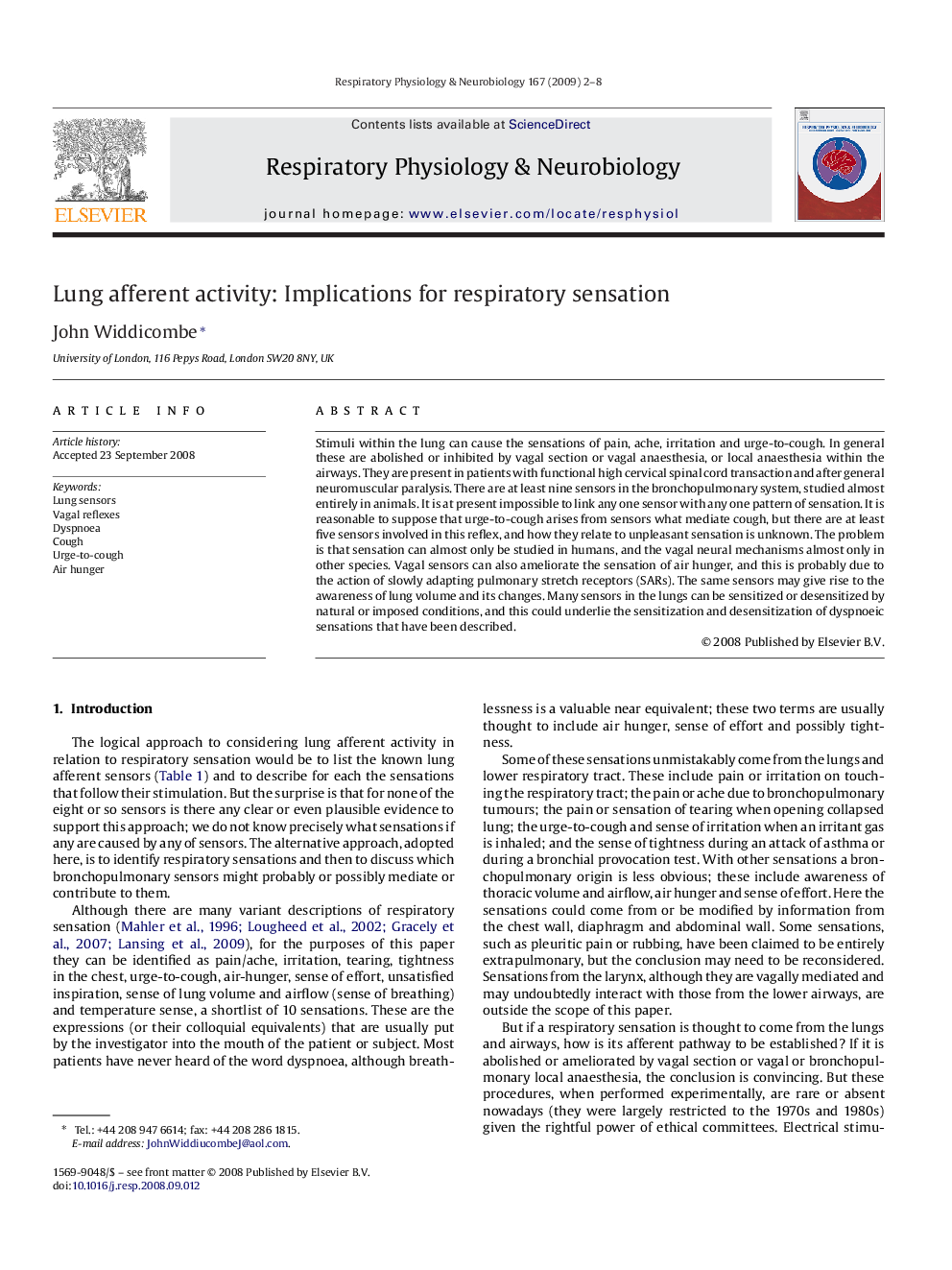| کد مقاله | کد نشریه | سال انتشار | مقاله انگلیسی | نسخه تمام متن |
|---|---|---|---|---|
| 2847856 | 1167393 | 2009 | 7 صفحه PDF | دانلود رایگان |

Stimuli within the lung can cause the sensations of pain, ache, irritation and urge-to-cough. In general these are abolished or inhibited by vagal section or vagal anaesthesia, or local anaesthesia within the airways. They are present in patients with functional high cervical spinal cord transaction and after general neuromuscular paralysis. There are at least nine sensors in the bronchopulmonary system, studied almost entirely in animals. It is at present impossible to link any one sensor with any one pattern of sensation. It is reasonable to suppose that urge-to-cough arises from sensors what mediate cough, but there are at least five sensors involved in this reflex, and how they relate to unpleasant sensation is unknown. The problem is that sensation can almost only be studied in humans, and the vagal neural mechanisms almost only in other species. Vagal sensors can also ameliorate the sensation of air hunger, and this is probably due to the action of slowly adapting pulmonary stretch receptors (SARs). The same sensors may give rise to the awareness of lung volume and its changes. Many sensors in the lungs can be sensitized or desensitized by natural or imposed conditions, and this could underlie the sensitization and desensitization of dyspnoeic sensations that have been described.
Journal: Respiratory Physiology & Neurobiology - Volume 167, Issue 1, 30 May 2009, Pages 2–8